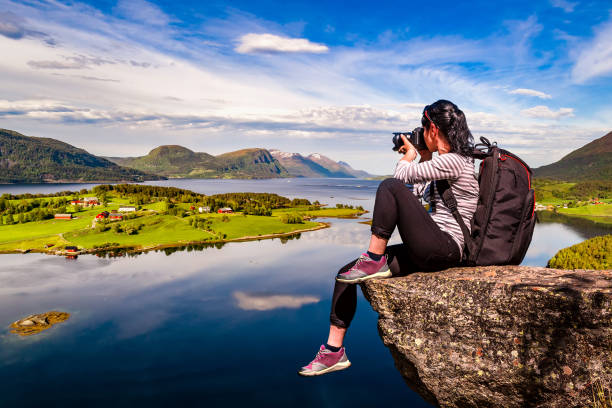JuJu News Hub
Your go-to source for the latest trends and insightful articles.
Chasing Light: How to Capture the World Through Your Lens
Discover tips to master lighting and transform your photography. Unleash your creativity and capture stunning images today!
10 Tips for Mastering Natural Light in Photography
Mastering natural light in photography can significantly enhance your images, allowing you to achieve stunning results without expensive lighting equipment. Here are 10 tips to help you harness the power of natural light effectively:
- Golden Hour: Shoot during the golden hour, which occurs shortly after sunrise and before sunset, to capture soft, warm light that flatters almost any subject.
- Find Shade: On bright, sunny days, seek out shaded areas to avoid harsh shadows and overly bright highlights.
- Use Reflectors: Utilize reflectors to bounce light onto your subject, softening shadows and creating a more balanced exposure.
- Adjust Your Angles: Experiment with different angles and orientations to maximize the direction and quality of natural light.
- Watch the Weather: Overcast skies can diffuse sunlight beautifully, creating even lighting that’s ideal for portraits.
Additionally, it’s essential to understand how to manipulate natural light for your advantage. Here are five more tips to consider:
- Backlighting: Don’t be afraid to shoot into the light; backlighting can create ethereal and captivating images.
- Use Lens Flare: Embrace lens flare for a creative effect; just be mindful of its impact on your image clarity.
- Monitor Changes: Natural light changes rapidly, so be ready to adjust your settings often to capture the best quality.
- Time Your Shots: Plan your shoots around specific times of day to catch the light at its best.
- Post-Processing: Finally, enhance your images in post-processing; even with fantastic natural light, a little editing can make a significant difference.

Understanding Composition: The Key to Capturing Stunning Images
Understanding composition is essential for anyone looking to capture stunning images. Good composition involves arranging the elements within your frame to create balance, harmony, and visual interest. One of the most popular techniques is the Rule of Thirds, where you divide your image into nine equal parts using two horizontal and two vertical lines. By positioning your subject along these lines or at their intersections, you can create a more dynamic and engaging photograph. Additionally, experimenting with leading lines, framing, and negative space can drastically improve the overall impact of your photos.
When you have a solid grasp of composition, it can turn an ordinary scene into an extraordinary image. For instance, consider how light and shadow play a vital role in emphasizing your subject and adding depth to your photograph. It's also important to be mindful of backgrounds; a cluttered background can distract from your subject. To enhance your composition, here are some quick tips:
- Fill the Frame: Don’t be afraid to get close to your subject.
- Experiment with Angles: Changing your perspective can lead to unique captures.
- Use Contrast: Play with colors and tones to make your subject pop.
How to Use Different Types of Light to Enhance Your Photography Skills
Understanding how to use different types of light is essential for enhancing your photography skills. Natural light, which varies throughout the day, can create striking images. Early morning and late afternoon, often referred to as the 'golden hours,' provide soft, diffused light that is ideal for portraits and landscapes. In contrast, harsh midday sunlight can produce strong shadows and highlights, making it a challenge for many photographers. Knowing when and how to work with these lighting conditions is key to capturing the best possible images.
Besides natural light, consider incorporating artificial light sources into your photography toolkit. Using flash or continuous lights can help you control the brightness and shadowing in your photos. Here are a few tips to effectively use artificial lighting:
- Use diffusers to soften harsh light.
- Experiment with light placement to create different moods.
- Combine natural and artificial light for unique effects.
By mastering these techniques, you can dramatically improve the quality and creativity of your photography.